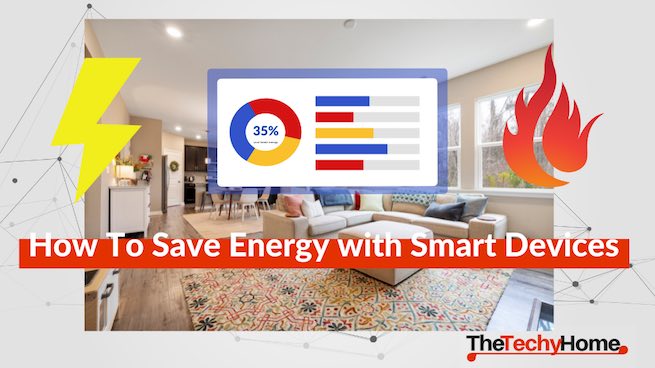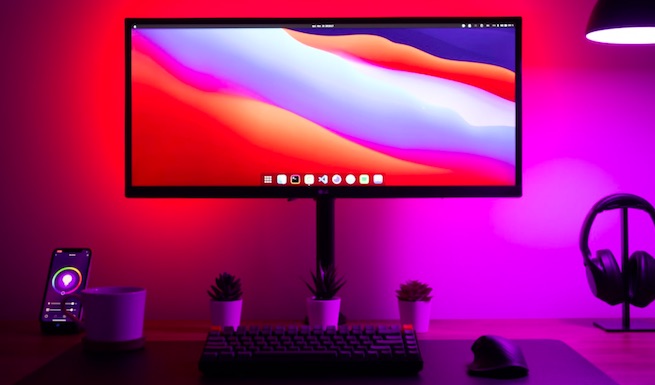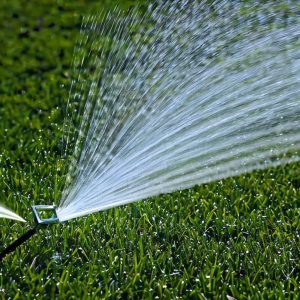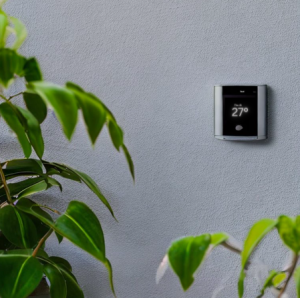
Smart home products are a great way to save energy and make your home more comfortable. However, not all smart home products are created equal when it comes to saving energy. In this article, we will take a look at some of the best smart home products that can help you save energy in your home.
Normal Home vs. Smart Home: Energy Consumption
A normal home uses energy in the form of electricity and gas to power appliances and lights. This energy is typically consumed without much thought to how it is used and how much is being used. In a smart home, energy consumption is monitored and managed to optimize efficiency and reduce waste.
Smart home technology can detect when a device is not in use and turn it off automatically, reducing the amount of energy used. This can result in significant savings on energy bills. Smart homes can also be designed to use renewable energy sources such as solar panels, making them more sustainable and reducing their carbon footprints.
Can smart homes reduce energy?
Leaking pipes and hoses can lead to significant water wastage with associated costs, with the EPA estimating 10% of bills could be reduced by addressing these leaks.
Smart homes can reduce your energy bill by up to 30%! However, this number will vary depending on the type of home and the features of the smart home product.
Some products, like sensors that turn off lights when you leave a room or a thermostat that adjusts the temperature according to your schedule, are very simple and easy to use. Other products, like smart switches that can control multiple appliances with one click, require more skill but can save you even more money in the long run.
How Can You Save Energy With Smart Home Automation?
There are a few ways that you can save energy with smart home automation. One way is to use sensors to detect when appliances are being used and turning them off when they’re not needed.
Another way is to adjust the temperature and air filters in your home based on weather conditions.
You can use smart home devices to monitor your energy usage and make adjustments accordingly on your own or automatize the adjusting itself.
Create schedules to regulate energy usage.
One way to save energy with smart home automation is to create schedules to regulate energy usage. For example, you can set your thermostat to heat up in the morning and cool down at night, or turn off your lights when you leave the house. This will help you conserve energy and save money on your electric bill.
Get out of the standby habit with smart plugs.
Another way to save energy with smart home automation is to get out of the standby habit with smart plugs. When you plug in a smart plug, your devices will automatically turn on and off when they’re connected and disconnected from the power source. This can help you save energy and money on your electric bill.
How Do Smart Plugs Save Energy?
As mentioned earlier, when you plug in a smart plug, your devices will automatically turn on and off when they’re connected and disconnected from the power source. This can help you save energy and money on your electric bill.
Here are some examples of Smart Plugs:
- Wemo Smart Plug
- Meross Smart Plug
- Kasa Smart Wi-Fi Plug
- TP-Link Smart Wi-Fi Plug Mini
- Amazon Smart Plug
- iHome ISP100 Outdoor SmartPlug
- Belkin WeMo Insight Switch
How Do Smart Light Bulbs Save Energy?

Smart light bulbs can save you energy by using less power to achieve the same level of brightness. For example, a smart LED light bulb will use about 50% less power than a traditional light bulb.
Moreover, many smart light bulbs are compatible with Z-wave hubs or Apple HomeKit, which allows you to control them from your iPhone, iPad, or Android device. This means that you can turn off your lights when you leave the room or change the lighting schedule in your home without having to reach for a remote control.
Here are some examples of Smart Bulbs:
- Philips Hue
- LIFX
- Sengled Smart Bulb
- Cree Connected LED Bulb
- Belkin WeMo LED Bulbs
- TP-Link Smart Wi-Fi LED Bulbs
- GE Link Connected LED Bulbs
Smart Sprinkler Systems

One way to save energy with smart home automation is to use smart sprinkler systems. These systems can be configured to turn off when a certain amount of water is used, which can help you conserve water and save money on your water and electric bill. And thanks to Z-Wave technology, the signal coming from. your smart home hub to the your smart sprinkler can reach up to 100 feet.
Here are some examples of Smart Sprinkler Systems:
- RainMachine
- Orbit B-Hyve
- Rachio Smart Sprinkler Controller
- Skydrop Smart Sprinkler
- Gardena Smart Water Control
- Netro Smart Sprinkler System
- Melnor Hydrawise Smart Irrigation
Smart Water Leak and Freeze Detectors.
Smart water leak and freeze detectors can save you money on your water and electric bill by detecting when water is leaking or freezing in your home. This information can then be used to adjust your home’s heating and cooling systems accordingly.
These devices can be configured to turn off your water when there’s a leak or when the temperature drops below a certain threshold. This can help you conserve water and again save money on your water and electric bill.
Here are some examples of Smart Water Leak and Freeze Detectors:
- Honeywell Lyric Wi-Fi Water Leak and Freeze Detector
- D-Link Wi-Fi Water Sensor and Alarm
- iHome Control Smart Water Detector
- Flume Smart Home Water Monitor
- Flo by Moen Smart Home Water Security System
- Watts FloodSafe Automatic Shutoff Valve
- Roost Smart Water Leak and Freeze Detector
How Do Smart TV’s Save Energy?
Smart TV’s can save energy by automatically turning off when they’re not being used. This saves energy both during the day and at night, when most TVs are left on. In addition, many smart TV’s come with built-in sensors that can detect when someone is sitting down in front of the TV and turn it off automatically.
Here are some examples of Smart TV’s:
- Samsung QLED 8K Smart TV
- LG OLED Smart TV
- Sony X900H Series 4K UHD
- TCL 6-Series 4K UHD Dolby Vision HDR Roku Smart TV
- Vizio P-Series Quantum X 4K HDR Smart TV
- Hisense 4K Ultra HD Smart Laser TV
- Panasonic GX800B 4K HDR LED LCD Smart TV
How Do Smart Thermostats Save Energy?

One way to save energy with smart home automation is to use smart thermostats. These devices can be configured to turn off your lights when you leave the house, or they can be set to automatically turn on your heating and cooling system when you return. This will help you save energy both during the day and at night.
Here are some examples of Smart Thermostats:
- 1: Nest Learning Thermostat
- ecobee SmartThermostat
- Honeywell Lyric T5 Wi-Fi Thermostat
- Emerson Sensi Touch Wi-Fi Thermostat
- Ecobee4 SmartThermostat with Alexa Built-in
- Honeywell Home T9 Smart Thermostat
- Lyric Round Wi-Fi Thermostat
How Much Energy Does the Average Home Use?
According to the U.S. Department of Energy, the average home uses around 1,500 kWh of energy per month. This number can vary depending on your home’s size and layout, but it’s a good starting point.
The good news is that by installing smart home products and using them correctly, you can reduce your energy use by an average of 25%. That’s enough to save you over $100 per year!
Conclusion
Smart home automation is a great way to save energy and money in the long run. Not only can you save energy by using smart plugs, bulbs, TVs, and thermostats, but you can also save money on your monthly energy bills. Don’t forget to check our other articles on smart home devices to help you out choose the right ones for you!

